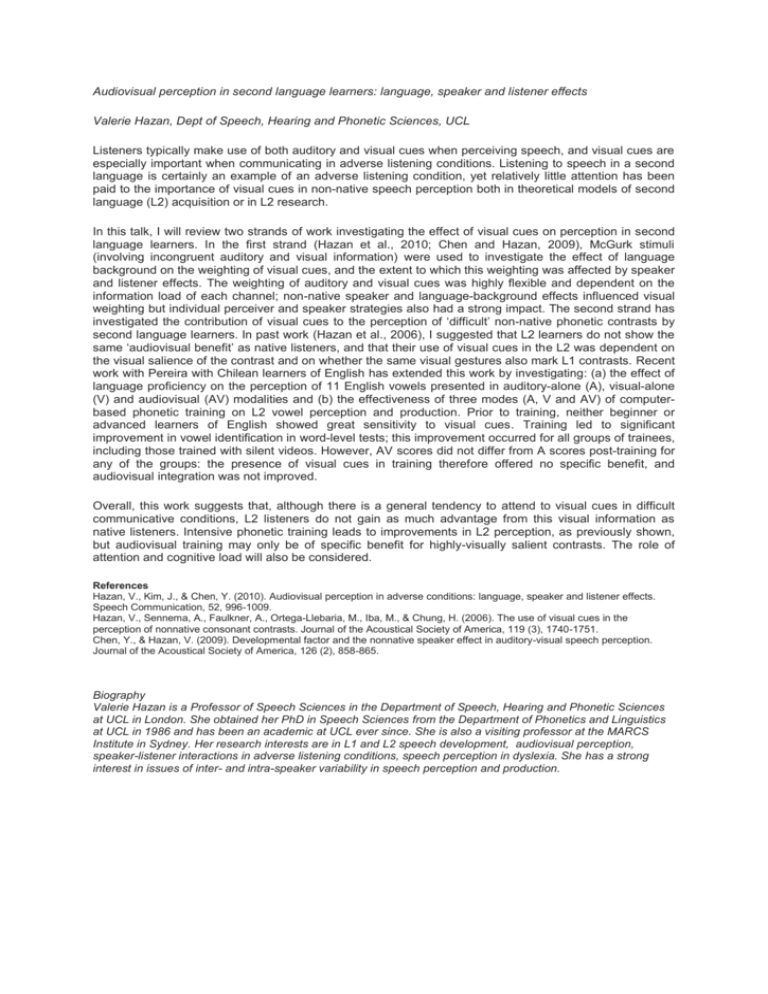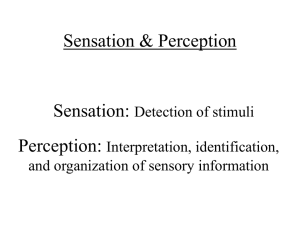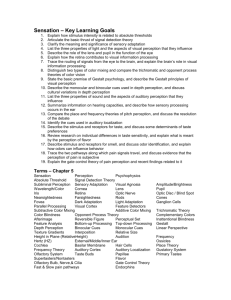Abstract_Barcelona
advertisement

Audiovisual perception in second language learners: language, speaker and listener effects Valerie Hazan, Dept of Speech, Hearing and Phonetic Sciences, UCL Listeners typically make use of both auditory and visual cues when perceiving speech, and visual cues are especially important when communicating in adverse listening conditions. Listening to speech in a second language is certainly an example of an adverse listening condition, yet relatively little attention has been paid to the importance of visual cues in non-native speech perception both in theoretical models of second language (L2) acquisition or in L2 research. In this talk, I will review two strands of work investigating the effect of visual cues on perception in second language learners. In the first strand (Hazan et al., 2010; Chen and Hazan, 2009), McGurk stimuli (involving incongruent auditory and visual information) were used to investigate the effect of language background on the weighting of visual cues, and the extent to which this weighting was affected by speaker and listener effects. The weighting of auditory and visual cues was highly flexible and dependent on the information load of each channel; non-native speaker and language-background effects influenced visual weighting but individual perceiver and speaker strategies also had a strong impact. The second strand has investigated the contribution of visual cues to the perception of ‘difficult’ non-native phonetic contrasts by second language learners. In past work (Hazan et al., 2006), I suggested that L2 learners do not show the same ‘audiovisual benefit’ as native listeners, and that their use of visual cues in the L2 was dependent on the visual salience of the contrast and on whether the same visual gestures also mark L1 contrasts. Recent work with Pereira with Chilean learners of English has extended this work by investigating: (a) the effect of language proficiency on the perception of 11 English vowels presented in auditory-alone (A), visual-alone (V) and audiovisual (AV) modalities and (b) the effectiveness of three modes (A, V and AV) of computerbased phonetic training on L2 vowel perception and production. Prior to training, neither beginner or advanced learners of English showed great sensitivity to visual cues. Training led to significant improvement in vowel identification in word-level tests; this improvement occurred for all groups of trainees, including those trained with silent videos. However, AV scores did not differ from A scores post-training for any of the groups: the presence of visual cues in training therefore offered no specific benefit, and audiovisual integration was not improved. Overall, this work suggests that, although there is a general tendency to attend to visual cues in difficult communicative conditions, L2 listeners do not gain as much advantage from this visual information as native listeners. Intensive phonetic training leads to improvements in L2 perception, as previously shown, but audiovisual training may only be of specific benefit for highly-visually salient contrasts. The role of attention and cognitive load will also be considered. References Hazan, V., Kim, J., & Chen, Y. (2010). Audiovisual perception in adverse conditions: language, speaker and listener effects. Speech Communication, 52, 996-1009. Hazan, V., Sennema, A., Faulkner, A., Ortega-Llebaria, M., Iba, M., & Chung, H. (2006). The use of visual cues in the perception of nonnative consonant contrasts. Journal of the Acoustical Society of America, 119 (3), 1740-1751. Chen, Y., & Hazan, V. (2009). Developmental factor and the nonnative speaker effect in auditory-visual speech perception. Journal of the Acoustical Society of America, 126 (2), 858-865. Biography Valerie Hazan is a Professor of Speech Sciences in the Department of Speech, Hearing and Phonetic Sciences at UCL in London. She obtained her PhD in Speech Sciences from the Department of Phonetics and Linguistics at UCL in 1986 and has been an academic at UCL ever since. She is also a visiting professor at the MARCS Institute in Sydney. Her research interests are in L1 and L2 speech development, audiovisual perception, speaker-listener interactions in adverse listening conditions, speech perception in dyslexia. She has a strong interest in issues of inter- and intra-speaker variability in speech perception and production.







